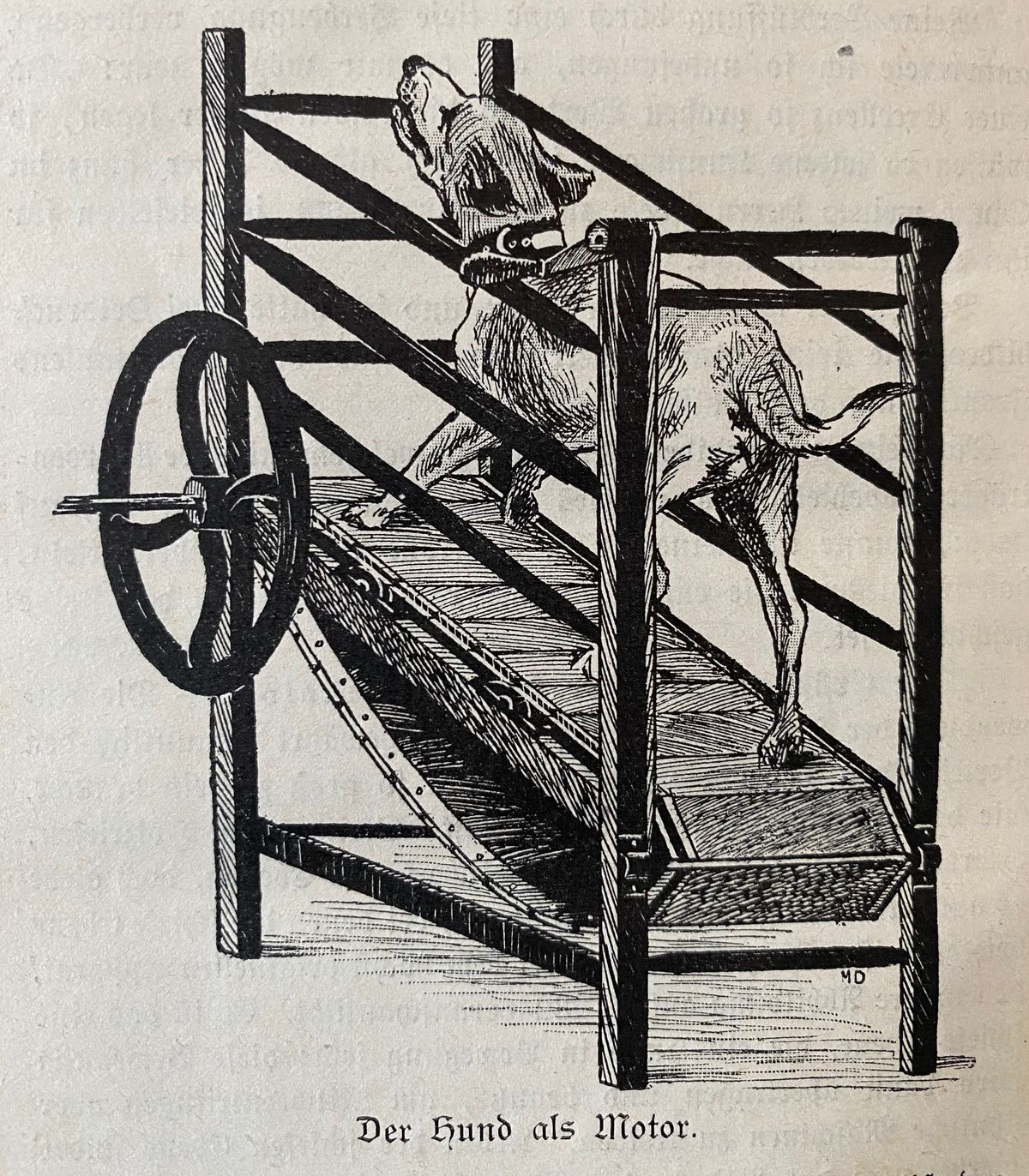The dog as a machine drive

In the fascinating world of historical inventions, one comes across some remarkable and unexpected ideas. One such is the use of the "dog as an engine," an invention presented in the 19th century that uses the principles of physics in a surprising way.
This idea, documented in the "Bibliothek der Unterhaltung und des Wissens" from 1897, 9th volume, is based on the concept of the inclined plane. Here, a treadmill that is constantly in motion is used as an inclined plane on which a dog runs. The dog's natural instinct to run up the moving surface then drives a machine, such as a milk centrifuge or similar device.
This invention is reminiscent of the familiar running wheels for hamsters, where the animals' running sets the wheel in motion. Here, however, the dog's energy is used to power a useful machine.
The presentation of this unusual invention at an agricultural exhibition in Paris in the 19th century must surely have caused a sensation. It shows in an impressive way how creative solutions and a deeper understanding of physics can lead to innovative and practical inventions.
Today, however, such an invention would probably meet with considerable resistance. In our modern society, where animal welfare is a high priority, using a dog to drive a machine could be considered animal cruelty. It is therefore unlikely that this invention would find application in modern times.
However, this historical invention offers us a fascinating glimpse into the past and shows us how our attitudes and values have evolved over time. It is a living example of the infinite possibilities of human creativity and ingenuity, but also of the need to consider the welfare of all living beings.




